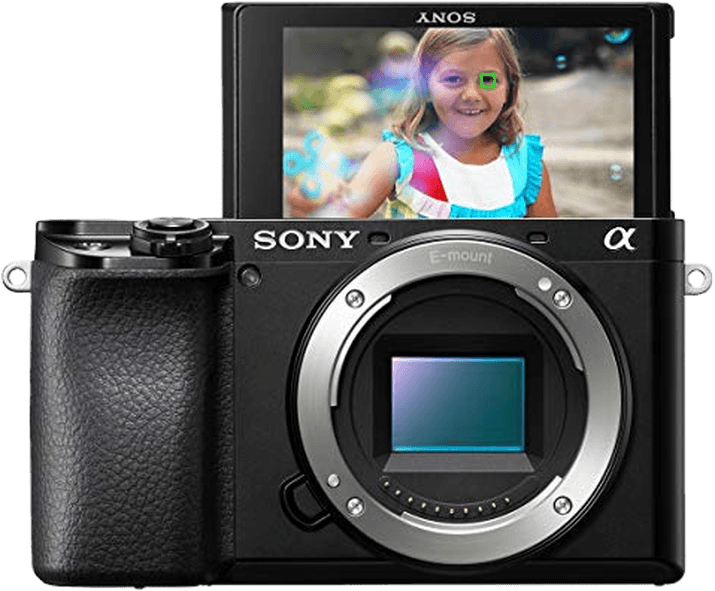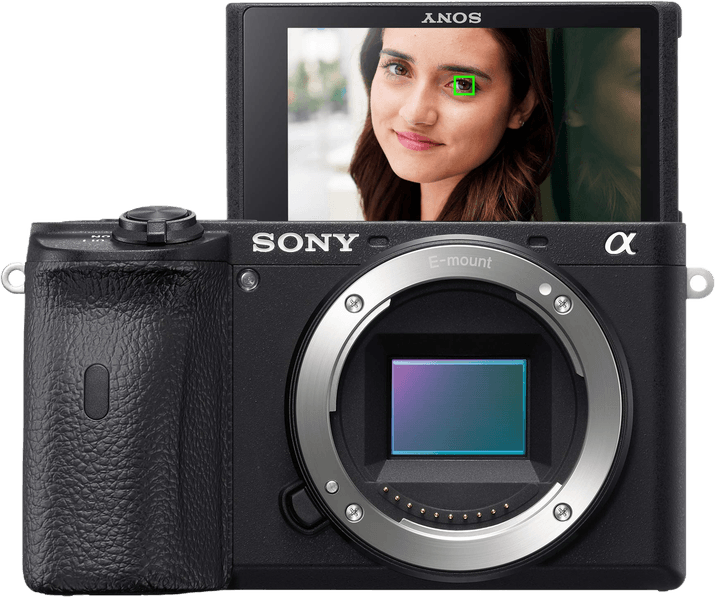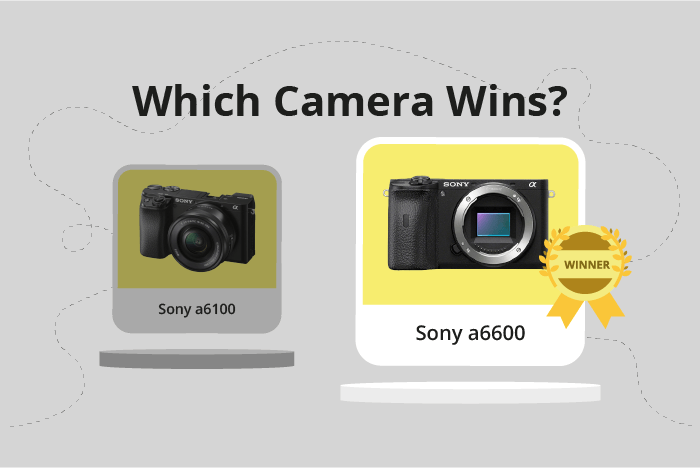Sony a6100 vs a6600 Comparison
Sony a6100

Sony a6600

The Sony a6600 outperforms the Sony a6100 with a score of 75/100 compared to the a6100’s 66/100. Both cameras are mirrorless and were announced on the same day in 2019. They share the same dimensions (120 x 67mm), but the a6600 is slightly heavier (503g) and deeper (69mm) than the a6100 (396g and 59mm).
The a6600 has the advantage of a higher score, meaning it is a better camera overall. Its higher launch price of $1200 also suggests it offers more features and better performance than the a6100, which launched at $750.
However, the a6100 does have the benefit of being lighter and more compact, making it easier to carry around. While the a6600 is the superior camera, the a6100 still offers great value for those who prioritize portability and affordability.
Sony a6100 vs a6600 Overview and Optics
The Sony a6600 outperforms the Sony a6100 in optics with a score of 76 out of 100, compared to the a6100’s 68. Both cameras share several key specifications, including 24 (a6100) and 24.2 (a6600) megapixels, an 11 fps shooting speed, a CMOS sensor type, a Bionz X processor, a DXOMARK sensor score of 82, an APS-C sensor size, and a Sony E lens mount.
The a6600’s superior optics are primarily due to its image stabilization feature, which the a6100 lacks. Image stabilization significantly reduces camera shake and motion blur in photos, resulting in sharper, clearer images. This advantage is particularly beneficial for photographers shooting in low light conditions or using longer focal length lenses, where camera shake is more noticeable.
While the a6100 falls short in image stabilization, it still offers excellent image quality and performance due to its shared specs with the a6600. Its 24-megapixel resolution, 11 fps shooting speed, and Bionz X processor ensure fast, high-quality image capture. However, the absence of image stabilization may limit its versatility in certain shooting situations.
Considering the optics of both cameras, the Sony a6600 is the clear winner due to its image stabilization feature. This added capability provides a significant advantage in capturing sharp, clear images in a variety of conditions. The Sony a6100, while still delivering impressive image quality, may not be as versatile or reliable in challenging shooting situations. For photographers seeking the best optics, the Sony a6600 is the superior choice.
Sony a6100 vs a6600 Video Performance
The Sony a6100 and Sony a6600 both have a video score of 91/100, indicating equal performance in this category. They share several common video specifications, including 4K maximum video resolution, 3840 x 2160 maximum video dimensions, and built-in time-lapse functionality.
The Sony a6100, however, offers a higher maximum video frame rate of 120fps compared to the a6600’s 100fps. This advantage allows the a6100 to capture smoother slow-motion footage and provide more flexibility in post-production. The additional 20fps makes a noticeable difference in the quality of high-speed video, giving the a6100 an edge in this area.
On the other hand, the Sony a6600 does not outperform the a6100 in any specific video specification. Given that both cameras have the same video score and share most of the same video features, there is no clear advantage for the a6600 in this comparison.
Considering the above points, the Sony a6100 proves to be the better choice for video capabilities due to its higher maximum video frame rate. This advantage is significant for those who frequently capture fast-moving subjects or require smoother slow-motion effects. The Sony a6600, while equal in most other aspects, does not offer any additional benefits in terms of video performance. Therefore, the a6100 is the recommended choice for videographers who prioritize high frame rate capabilities.
Sony a6100 vs a6600 Features and Benefits
The Sony a6600 emerges as the winner with a feature score of 81/100, while the Sony a6100 scores 68/100. Both cameras share several specifications, such as a 3-inch screen size, 921,600-dot screen resolution, touchscreen capability, flip screen, and the absence of GPS. Additionally, both cameras possess WIFI and Bluetooth connectivity.
The Sony a6600 outperforms the a6100 in several aspects. Its higher feature score indicates that it offers more advanced options and settings for photographers, enhancing their shooting experience. The a6600’s superiority in features provides users with better control and customization, allowing them to capture their desired shots with ease.
On the other hand, the Sony a6100 may have a lower feature score, but it still offers a decent range of options for photographers. In some cases, users may prefer the a6100 due to its simplicity and ease of use. The camera’s lower score does not necessarily make it a bad choice, but rather a more straightforward alternative for those who do not require the advanced features of the a6600.
In comparing the Sony a6100 and a6600, it is evident that the a6600 provides a richer feature set, catering to photographers who seek more advanced options and settings. The a6100, while not as feature-rich, remains a viable choice for those who prefer a simpler and more user-friendly camera. Ultimately, the decision between the two cameras depends on the individual photographer’s needs and preferences.
Sony a6100 vs a6600 Storage and Battery
The Sony a6600 outperforms the Sony a6100 in storage and battery with a score of 48/100, compared to the a6100’s 37/100. Both cameras share some common specifications, such as having one memory card slot and accepting SD/SDHC/SDXC and Memory Stick Pro Duo cards. Additionally, both cameras offer USB charging.
The a6600’s superiority lies in its significantly longer battery life, providing 810 shots per charge compared to the a6100’s 420 shots. This is due to the a6600 using the NP-FZ100 battery, while the a6100 relies on the NP-FW50 battery. The extended battery life makes the a6600 more suitable for extended shooting sessions and reduces the need to carry spare batteries.
On the other hand, the a6100 doesn’t offer any advantages in terms of storage and battery. It shares the same storage capabilities as the a6600 but falls short in battery performance.
Taking these factors into account, the Sony a6600 clearly excels in the storage and battery category, making it a better choice for photographers who prioritize longer battery life and reliable storage options.
Alternatives to the Sony a6100 and a6600
Are you still undecided about which camera is right for you? Have a look at these popular comparisons that feature the Sony a6100 or the Sony a6600:

